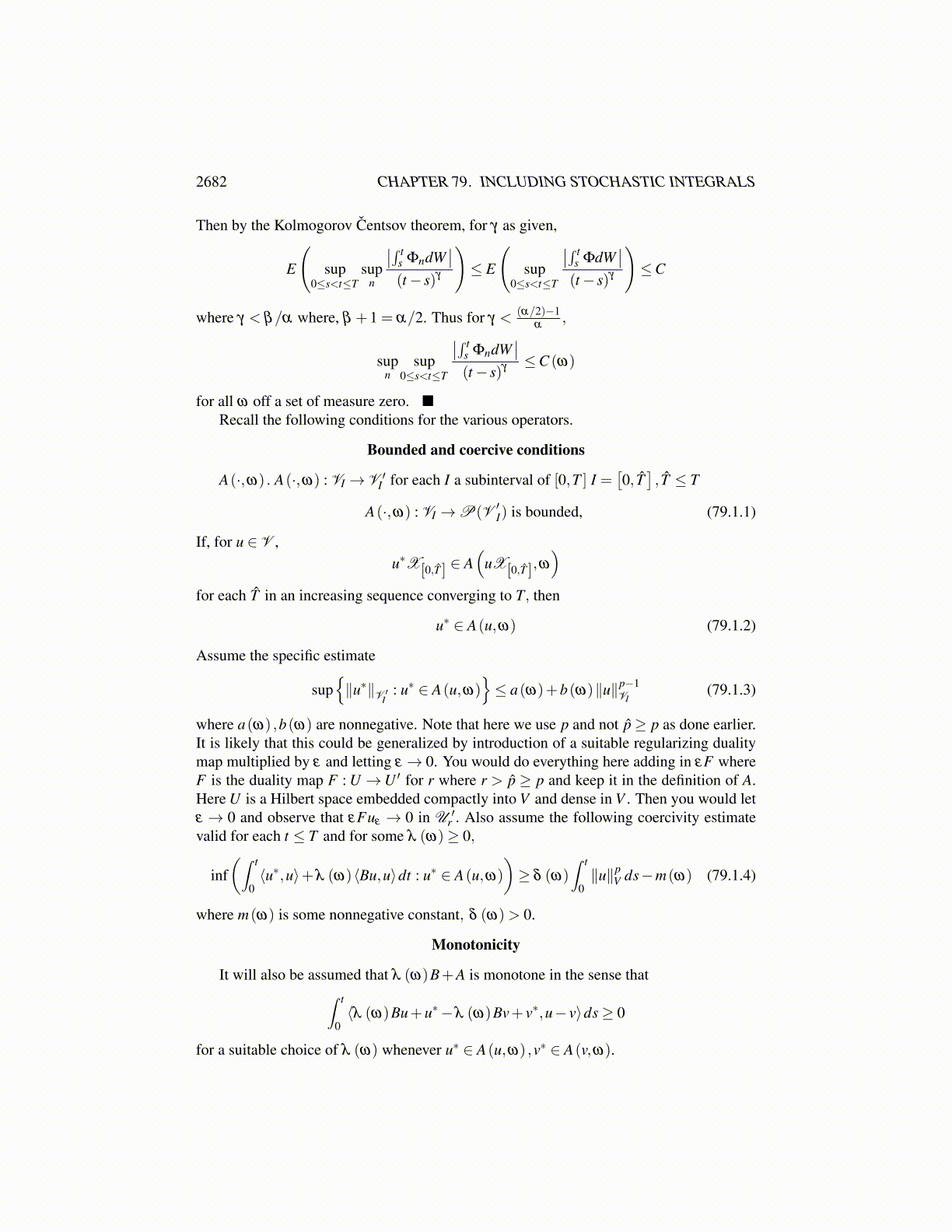
2682 CHAPTER 79. INCLUDING STOCHASTIC INTEGRALS
4. One can also generalize to the case where Φ is only progressively measurable andinstead of being in L2
([0,T ]×Ω;L2
(Q1/2U,H
)), you have only that
P(∫ T
0∥Φ(t)∥2
L2dt < ∞
)= 1
This is done by using an appropriate sequence of stopping times called a localizingsequence. More generally a local martingale is a stochastic process M (t) adapted tothe filtration for which there is a locallizing sequence of stopping times {τn} suchthat limn→∞ τn = ∞ and Mτn is a martingale. Local martingales will occur in theestimates which are encountered in what follows.
5. Denoting by M (t) the stochastic integral, M (t) =∫ t
0 ΦdW, the quadratic variation isgiven by
[M] (t) =∫ t
0∥Φ∥2
L2ds
6. We will also need a part of the Burkholder Davis Gundy inequality [77], Theorem63.4.4 which in terms of this stochastic integral is of the form
∫Ω
M∗dP≤CE
((∫ T
0∥Φ∥2
L2ds)1/2
), C some constant
where M (t) is the above stochastic integral and
M∗ ≡ sup{∥M (t)∥H : t ∈ [0,T ]}
Now let Φ ∈ L2([0,T ]×Ω;L2
(Q1/2U,W
)). Let an orthonormal basis for Q1/2U be
{gi} and an orthonormal basis for W be { fi}. Then { fi⊗gi} is an orthonormal basis forL2(Q1/2U,W
). Hence,
Φ = ∑i
∑j
Φi j fi⊗g j
where fi⊗ g j (y) ≡ (g j,y)Q1/2U fi. Let E be a separable real Hilbert space which is densein V. Then without loss of generality, one can assume that the orthonormal basis for W areall vectors in E. Thus the orthogonal projection of Φ onto the closed subspace
span({ fi⊗gi} , i, j ≤ n)
given by
Φn ≡n
∑i=1
n
∑j=1
Φi j fi⊗g j
Then Φn ∈ L2([0,T ]×Ω;L2
(Q1/2U,E
))and also
limn→∞∥Φn−Φ∥L2([0,T ]×Ω;L2(Q1/2U,W)) = 0